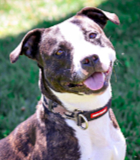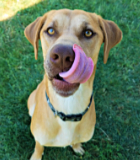Hidden Health Dangers of Dog Tail Chasing
- This topic has 0 replies, 1 voice, and was last updated 15 years, 11 months ago by
Mackenzie’s Admin.
-
AuthorPosts
-
July 2, 2009 at 6:55 pm #437
Mackenzie’s Admin
MemberHidden Health Dangers of Dog Tail Chasing
By Jennifer Viegas for The Dog DailyLook up “dog chasing tail” on YouTube, and you will find thousands of videos showing breeds, ranging from sprightly adult collies to yipping tiny lap dogs running around in circles, trying to catch their elusive tail. Your own dog may even be a tail chaser, since the playful behavior is quite common.
But too much tail chasing can be a symptom of health problems, including high cholesterol, according to new research. Does your dog need professional help, or does it just enjoy some good old-fashioned tail fun? We’ve got the questions to help you determine the answer.How often does your dog chase its tail?
A recent study conducted by Hasan Batmaz and colleagues from the University of Uludag, Turkey, found that dogs exhibiting compulsive tail chasing engaged in this activity for a minimum of 60 seconds per bout, several times a day. Additionally, “all owners reported that their dogs commonly whined, barked or growled during tail chasing,” according to Dr. Batmaz, a member of the university’s Faculty of Veterinary Medicine, and his team. They observed dogs rapidly spinning in tight circles over and over again. The canines would also sometimes back up against a wall and stare at their tail or sit in a corner in an apparent effort to grasp the tail.Does your dog demonstrate other obsessive-compulsive behaviors?
In addition to tail chasing, obsessive-compulsive disorder (OCD) in dogs can include behaviors such as grooming, flank sucking, pacing, whirling, snapping at air and chewing. Most canines do all of these things every so often, but similarly to an OCD-afflicted person, when behaviors become overly repetitive, they can signal a problem. (The TV character Detective Monk, for example, is forever trying to keep his hands clean, to the point of obsession.)What is your dog’s age, sex and breed?
Lisa Peterson, a dog breeder who is the director of communications for the American Kennel Club, says that while tail chasing is usually just a puppy thing that happens when young pups discover they have a tail, it can also be influenced by a dog’s age, sex and breed. Dogs with OCD will remain obsessed with their tails long past puppyhood. Females and certain breeds also tend to chase their tails more.The Uludag scientists, whose research was published in the Journal of Small Animal Practice, studied many different breeds. They believe terriers, German shepherds, Anatolian sheepdogs and dogs originally bred for herding appear to be more prone to tail chasing.
Have you recently had your dog’s cholesterol levels checked?
The majority of dogs with obsessive tail chasing in the recent study were found to suffer from high cholesterol, with HDL and LDL cholesterol both significantly higher than in dogs that only chased their tails on occasion. High amounts of cholesterol may clog cell membranes at the microscopic level, affecting flows of brain hormones involved in mood and behavior. High cholesterol has also been linked to people who suffer from panic attacks and/or OCD.
If you suspect that your dog might chase its tail too often and could have high cholesterol, experts suggest the following:
Schedule a visit with your veterinarian A simple blood test can determine your dog’s cholesterol levels. It’s a good idea to do this on at least an annual basis, since high cholesterol can be associated with many other health issues, including:
[list:3fpxs56d]Kidney disorders
An under-functioning thyroid gland
An over-functioning adrenal gland
Diabetes
Pancreas inflammation
Bile duct obstruction[/list:u:3fpxs56d]
Feed your dog a high-quality commercial dog food Manufactured pet foods must all meet governmental regulations for protein, ash, fat and water content, and more.
Look for high-quality fat sources on dog food labels Fats from poultry and fish sources not only help to keep cholesterol levels in check, but they also help your pet maintain a healthy skin and coat, metabolize vitamins, and last but not least, they can be tasty to your dog when mixed with other good ingredients.
Don’t feed your dog table scraps While dogs don’t suffer from hardening of the arteries, you can elevate your dog’s blood cholesterol levels by feeding it table scraps, like that half-eaten burger snuck under the table. “Dogs don’t naturally gorge themselves on junk foods like we do,” says Peterson, who adds that we determine how healthy our dogs’ diets are.
With proper maintenance of your dog’s health and diet, you can enjoy watching your pet engage in the occasional tail chase without worry. Just ask the owners of Angel, a Maltese puppy featured on YouTube. After running in circles chasing his tiny stub of a tail, Angel gave up and enjoyed a relaxing head brush. -
AuthorPosts
- You must be logged in to reply to this topic.











































